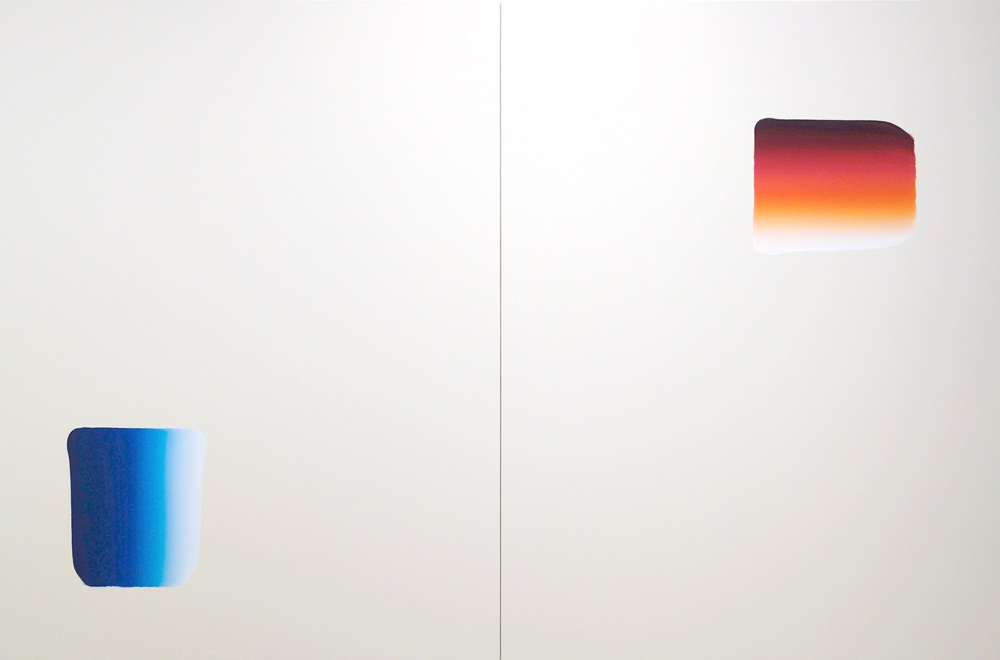New York—Pace Gallery is pleased to present an exhibition of new paintings by Lee Ufan. The paintings are a continuation of the artist’s renowned Dialogue series, and this exhibition is the first time Lee will exclusively show color Dialogue paintings in a focused installation. On view at 508 - 510 West 25th Street from September 14 through October 13, 2018, the exhibition is the artist’s sixth show with Pace Gallery worldwide.
Available:
September 14, 2018 -
October 14, 2018
About:
Drawing together fourteen paintings from 2016 – 2018, the exhibition debuts most of the works on view. While the brushstrokes in earlier works from the Dialogue series are the result of several applications of a monochromatic mineral pigment built up into a substantial single mark, these new works...
more >>
Drawing together fourteen paintings from 2016 – 2018, the exhibition debuts most of the works on view. While the brushstrokes in earlier works from the Dialogue series are the result of several applications of a monochromatic mineral pigment built up into a substantial single mark, these new works encompass a broad range of saturated hues. Painted in a highly controlled method, with brushstrokes that relate to the artist’s breath, the works take up to a month or more to complete, and focus on the resonance of space, color, light and tension. In the new paintings, Lee has begun to introduce gestural strokes as well as unaltered expressionistic elements, including dots and specks of paint. The resulting forms invite the audience to participate in a conversation with the internal state of the artist, completing the concept of a dialogue, this series’ namesake. The unpainted canvas is as vital to the artist’s practice as the painted forms. For Lee, these undisturbed white and creamy white fields are necessary structures to allow the boundaries between the paintings and the space in which they are installed to blur, fostering a conversation from each work to the next, as well as the dialectic expression within the paintings themselves. A harmonious equilibrium and resonance between the visible and the invisible, the made and the unmade, is achieved; as stated by the artist: “A work of art is a site where places of making and not making, painting and not painting, are linked so that they reverberate with one another.” The exhibition features paintings that are among the largest Lee has ever made, including a single screen work that will encompass approximately 25 feet in length. Installed by the artist in response to the existing structure of the gallery, the large-scale paintings will foster a compelling and immersive visual environment—one that underscores the physicality of the paintings and their radiation through space, as well as encourages individualized contemplation and personal encounters with the work. Since his foundational role in Japan’s Mono-ha (“School of Things”) movement in the 1960s, Lee has developed an oeuvre attuned to the interconnectedness of matter and consciousness. Referring to his artworks as “living structures,” he takes a philosophical approach to creating them, viewing his gestures and raw materials as entities that reveal conditions and states of the world as well as our relationship to it. The exhibition highlights the artist’s continued attention to how gestures, light, and color inform our perceptions and experiences of space. On the occasion of the exhibition, Pace will publish a full-color catalogue, featuring installation images of the show, as well as an interview with the artist by writer and curator Philip Larratt-Smith. Larratt-Smith has written extensively on postwar and contemporary art, and has curated contemporary art exhibitions at museums and galleries around the world. The catalogue is anticipated for release in late 2018. Lee Ufan (b. 1936, Kyongsang-namdo, South Korea) emerged as one of the leading figures of the Japanese avantgarde group Mono-ha, in the late 1960s. Emphasizing the relationships between space, perception, and object, his works develop from an appreciation of nature and the inherent qualities of his materials. Combining artistic practice with philosophical writing, Lee’s oeuvre is characterized by thoughtful and direct iterations of gestures— engaging the viewer in contemplation of abstract forms and vivid restraint—manifesting in sculpture, paintings, works on paper, and ceramics. Lee’s work has been featured in over 150 group exhibitions since 1967, including the International Prints Biennale, Tokyo (1970, 1972); Bienal de São Paulo, Brazil (1969, 1973); Biennale of Sydney, Australia (1976); and Documenta, Kassel (1977). Over fifteen exhibitions have been devoted to Mono-ha and Dansaekhwa, including an exhibition organized for the 56th Venice Biennale in 2015. Lee has been the subject of over 140 one-artist exhibitions, including Resonance at the 52nd Venice Biennale (2007) and Marking Infinity, his major retrospective at the Solomon R. Guggenheim Museum, New York (2011). In 2014, the Palace of Versailles presented ten of Lee’s monumental sculptural works throughout its historic grounds. Other solo exhibitions include The Cane of Titan, State Hermitage Museum, St. Petersburg (2016); Les Fragments et la Fenêtre, Galerie de Sèvres, Citè de la céramique, Paris (2016); The Ha Jung-Woong Museum of Art’s Inaugural Exhibition, Gwangju Museum of Art, Korea (2017); and Relatum – Stage, Serpentine Sackler Gallery, London (2018). In fall 2019, the Hirshhorn Museum and Sculpture Garden, Washington, D.C. will debut the artist’s largest site-specific installation in the U.S., encompassing approximately ten new sculptures from the artist’s signature and continuing Relatum series. In 2010, the Lee Ufan Museum, dedicated to the artist’s oeuvre, opened on the Japanese island of Naoshima; and in 2015, the Busan Museum of Art in Busan, Korea inaugurated the Space Lee Ufan, a 1,400 square meter-space designed by the artist and dedicated to his paintings and installation work. Lee’s work can also be found in over sixty public collections worldwide, including Centre Pompidou, Paris; Galerie Nationale de Prague; Kunsthaus Zurich; The National Museum of Art, Osaka; Nationalgalerie, Berlin; Solomon R. Guggenheim Museum, New York, and Tate, London






